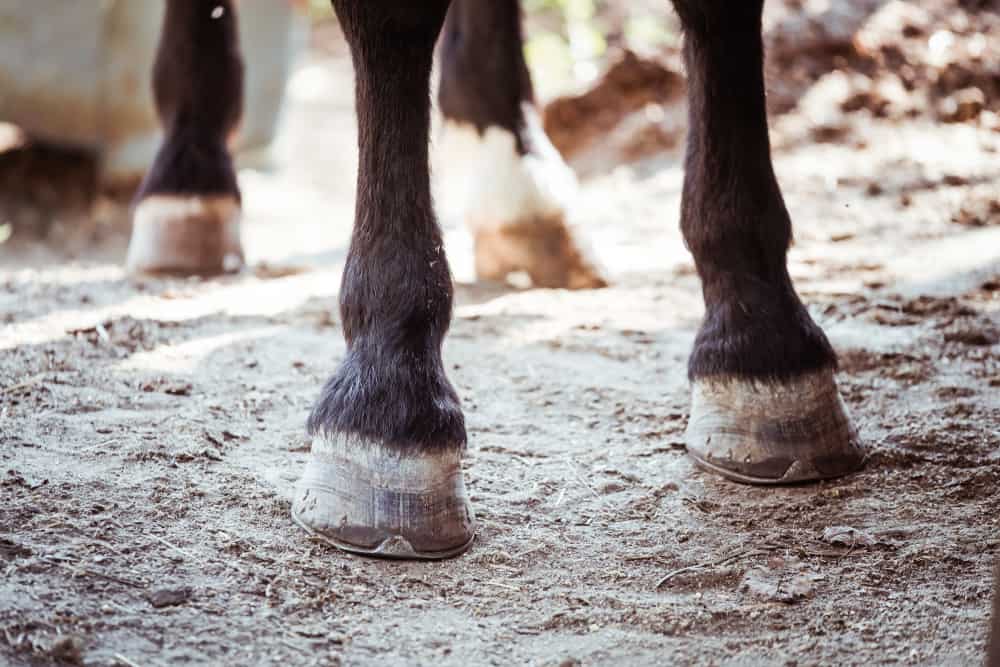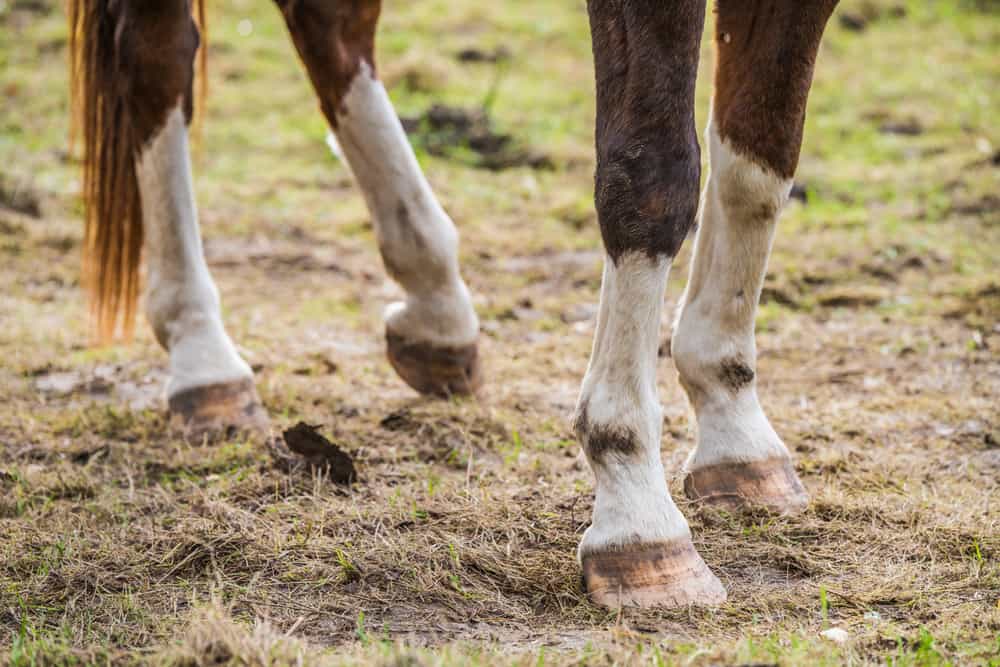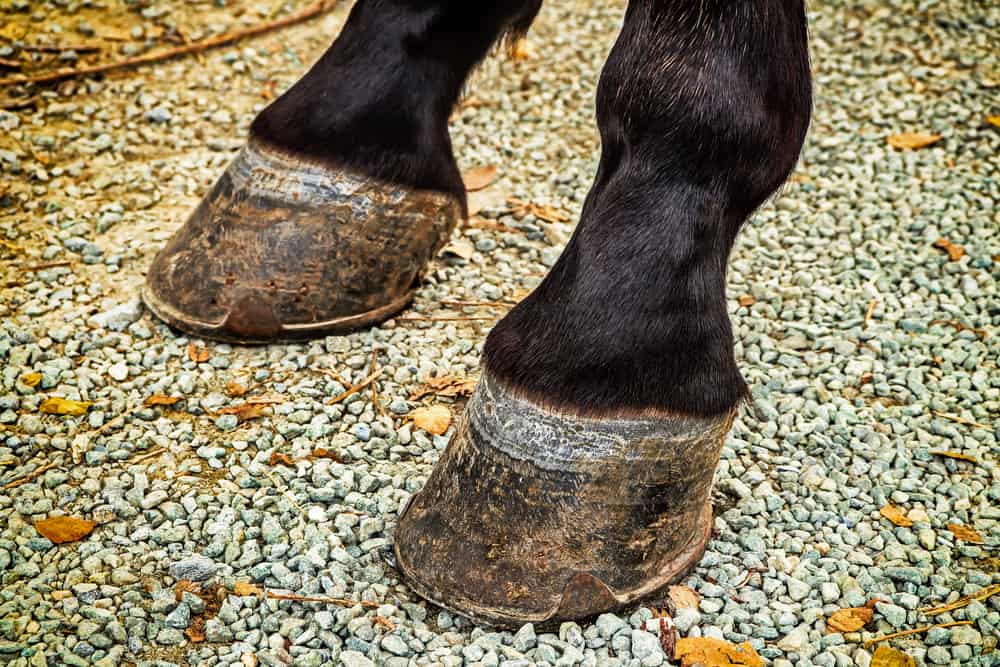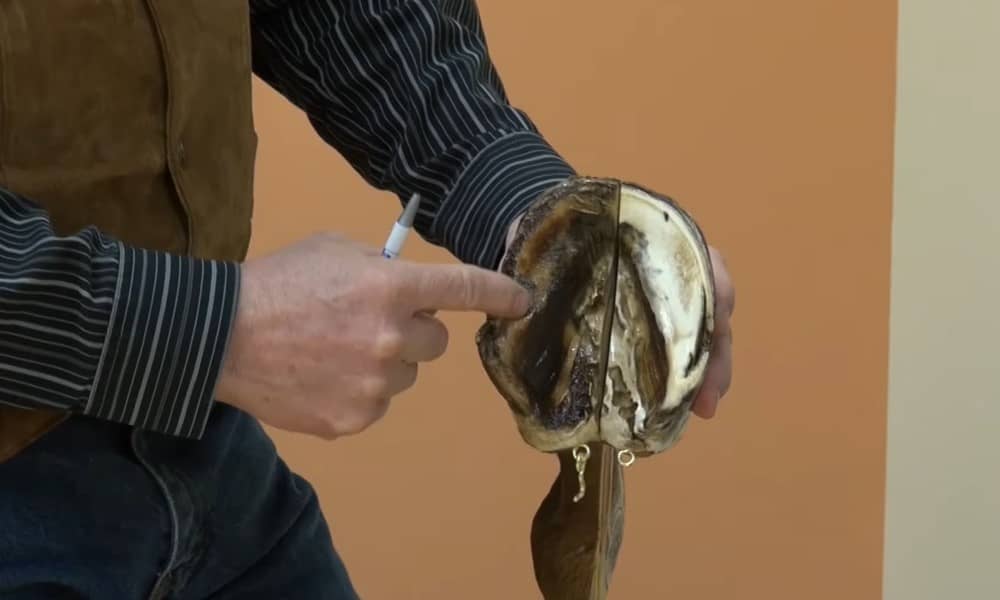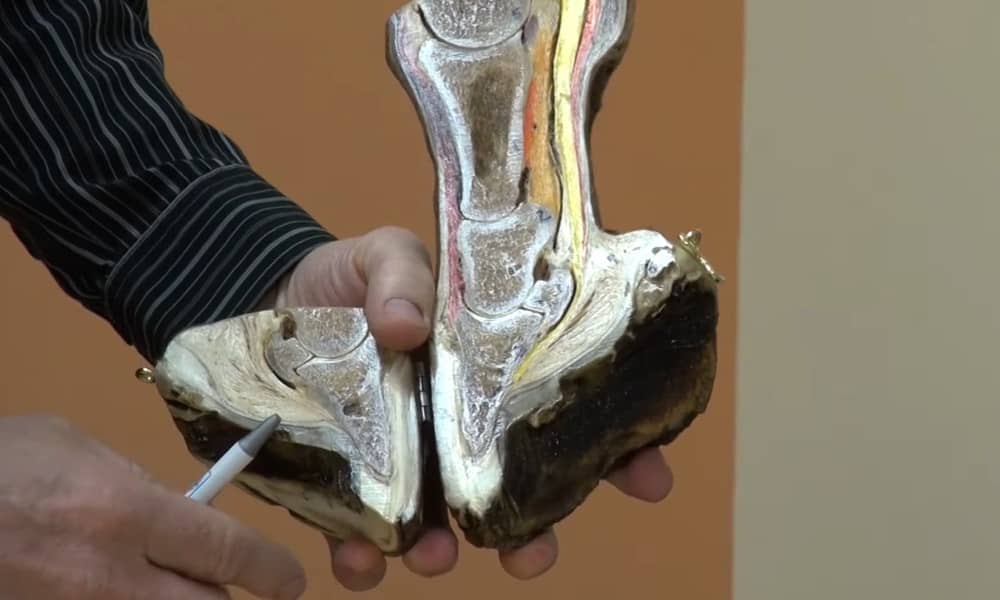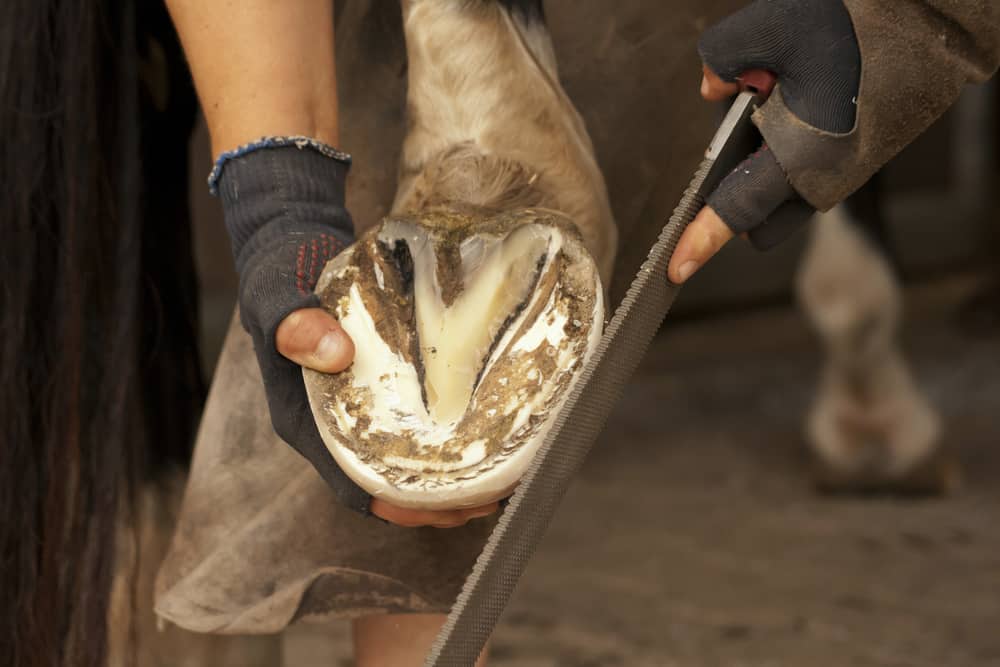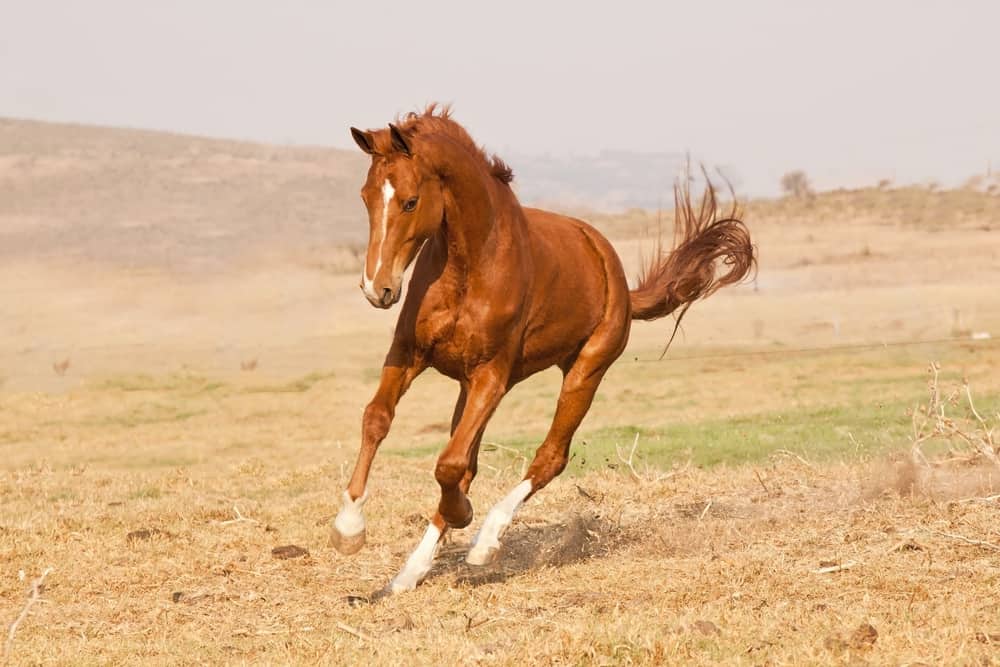Untrimmed hooves can cause a variety of problems to a horse. Just like a person’s toenails, a horse must keep their hooves trimmed to avoid complications.
Domesticated horses have trained farriers to do the job because an untrained person could do severe damage to the horse if they trim the hooves incorrectly. There is a much larger population of horses in the wild than those taken care of on ranches and farms, and I assume that those horses are not lining up every several weeks at the local spa for a pedicure.
So, we will discover how these wild horses trim their hooves and why it is so essential to a horse’s overall health and wellness.
What Are Hooves?
An animal that bears a sizeable nail-like case covering its toes is known as a hoofed animal. Typically, these animals are herbivorous and live in wide-open habitats such as the grasslands and prairies of the wild west.
Horses are odd-toed hoofed mammals because each of their legs receives support from one hoof, and those four hooves are critical to a horse’s survivability. Thus, hooves are much more complicated than what meets the eye.
I have not yet had the privilege of witnessing a stampede. Still, I can imagine the thunderous sound of a great group of animals running in the same direction due to something that either excited or frightened them.
Typically, the animals that participate in stampede behavior are hooved animals such as elephants, sheep, goats, pigs, wildebeests, rhinos, cattle, zebras, and are beloved wild horses.
And since horses have longer lower limbs than most mammals, they can cover more considerable distances with each stride. However, this is not the only reason that horses can run so efficiently.
Horses can save more energy when running because they use fewer muscles. For example, having fewer toes allows horses to run much faster and longer distances than other mammals.
All About The Hoof
By looking at the outer structure, the underside, and the inner framework of the hoof, we can better understand its complex nature. By not taking care of our feet, we could be seriously crippled, and for this reason, horse owners must take special care of their equine companion’s feet.
So, let’s take a quick look at the anatomy of a hoof:
1. Outer Structure
The outer wall is the most apparent feature of a horse’s hoof when looking down at its feet. Its hard covering supports the more delicate inner parts of the toe, similar to how a human toenail serves to protect the top of our toes.
The outer wall assists the horse to withstand the majority of shock and pressure subjected to it as it moves around. Therefore, healthy hooves should not present any cracks or rings in their outer structure; otherwise, the internal parts of the hoof could be prone to damage.
Besides the outer wall, the external hoof contains a coronary band, which “is at the top of the hoof wall where the hairline meets the hoof.” This band is critical in the health and growth of the outer wall.
There is the periople and the inner wall left to mention regarding the outer structure of the hoof. The periople is essentially new growth, whereas the inner wall is a more flexible layer that serves as a load-bearing component of the horse’s feet.
In any case, if you are a horse owner and notice any damage to the outer structure of your horse’s hooves, be sure to get in touch with your veterinarian immediately.
2. The Underside
The underside of the horse hoof can be divided into four main parts. First is the sole, made of the same keratin substance as the outer wall. Although its concave structure keeps the majority of the sole from coming in contact with the ground, it also serves as a shock absorber and helps protect the more intricate parts of the hooves underside.
Next is the frog that is the highly sensitive V-shaped structure that points down from the heel. The last two parts are the central sulcus and bars, which are related to the frog of the hoof.
A trained farrier will visually inspect these inner areas to determine if they are structurally sound. Enlargement or contraction of these areas could lead a horse to lameness as they could become susceptible to thrush and other infections.
3. Inner Framework
The movement of a horse is a mechanical masterpiece with many parts coming together to work seamlessly. For example, the interior structure of the hoof has three distinct elements: one cushion and two bones.
I’m sure that you can guess what the purpose of the digital cushion may be. If you said it provides a cushioning effect, then you are absolutely correct.
The coffin bone is the bone that is actually within the hoof itself. It helps to provide shape to the outer wall and is vital to the working relationship of the hoof.
The other bone that I must mention is the navicular. The navicular bone is a relatively small bone encapsulated within the hoof that provides balance and stabilization.
Takeaway
Hooves are much more than just oversize toenails. A horse would not be able to be a horse without its hooves. So, domesticated horses require human intervention to maintain them regularly and stay healthy because of their design and function.
I Need A Pedicure!
People and domesticated horses may meet their preferred technician or farrier when their toes or hooves need attention; however, wild horses are not lining up with appointment slips in hand.
Domesticated horses need extra attention because they are likely not moving around enough to support the natural filing down of their hooves that wild horses experience.
A horse’s movement and bodily structure will begin to fail if its hooves become unbalanced or compromised by some foreign object or debris. Whether your horse is barefoot or is shod (fit with horseshoes), the routine care of its hooves is just as critical.
Wild horses may not be taking a rest at the local spa because they are oblivious to the need of farriers. A farrier is a “skilled craftsperson capable of shoeing all types of equine feet, whether normal or defective, of making shoes to suit all types of work and working conditions, and of devising corrective measures to compensate for faulty limb action.”
Wild horses generally cover several kilometers a day across various surfaces. Doing so keeps their hooves trim as the different terrain provides different degrees of abrasion to wear down their hooves naturally.
The constant movement of the horse allows it to wear down the hoof at a rate similar to its growth. For this reason, the hooves on a wild horse will never become too large.
Further Hoof Care Discussion
Mother nature is more than adequate at maintaining proper hoof length on wild horses. However, several other points need consideration when comparing hoof health between a wild and a domesticated horse.
Wild horses move around freely and do not have to remain still in wet or moist environments. So, let it be clear that excess moisture breeds infection and can highly damage a horse’s hooves.
Human nature and people’s repurposing of animals can negatively contribute to health and wellness issues they may not encounter in the wild.
If you are a horse owner, I am sure you deeply love your horsey friend and will take extreme measures to keep your horse as safe and healthy as possible.
Nonetheless, in the wild, horses are not traveling on hard roads like cement and blacktop. They are not being ridden or used for competitive purposes. In addition, horses of the wild are not hauling around heavy loads for working purposes, whether it be for farming or some other enterprising labor.
So we can see that domesticated horses participate in many human-led activities, which creates a more passive and unnatural atmosphere, thereby contributing to various implications which may not affect a wild horse, down to the level of its hooves.
I think the important takeaway is that horses need their feet. And bad feet can lead to a long list of problems. For example, improperly maintained hooves can cause “cankers, bruised sole, abscesses, and cracks in the hoof wall.”
If hooves are not trimmed regularly every 6-8 weeks by a trained farrier, a horse may become susceptible to some of the mentioned conditions. In addition, if infection sets it, a horse may become lame.
Likewise, a poor shoeing job can be a horse’s worst nightmare. However, careful inspection of its hooves could prevent a dire situation where a veterinarian or specialist is necessary.
Conclusion
If you are a horse owner, chances are you are best friends with your horse’s farrier. This person regularly comes out to your paddock and stable to inspect and trim your horse’s hooves.
Tending to trim a horse’s hooves is a delicate matter that only someone with adequate amounts of theory and practical knowledge regarding the anatomy and function of the hoofing system should perform.
On the other hand, wild horses are in the hands of mother nature, who knows best. It provides everything the animal needs and creates an environment that considers every detail, including naturally trimming a horse’s hooves.
Please share your opinions, questions, and concerns about the importance of trimming a horse’s hooves in the comment section below.
